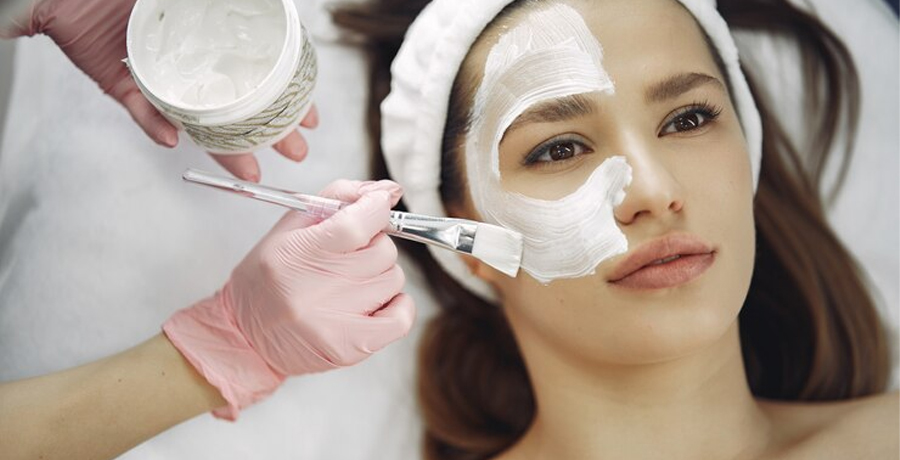A chemical peel is a popular non-surgical cosmetic treatment that uses a chemical solution to exfoliate the face skin's topmost layer of dead skin cells. It is also referred to as a facial peel. The chemical peel process stimulates the growth of new cells, resulting in a smoother and youthful-looking complexion.
Chemical peels can address several skin concerns, including fine lines, wrinkles, acne scars, hyperpigmentation, and uneven texture. Chemical peels provide long-lasting results.
Different Types of Chemical Peels
The chemical peel that is best for you depends on your skin type, problem, and desired results.
- Superficial Peels - This type of peel is the mildest and only penetrates the outer layer of the skin. It is generally used to improve skin texture, tone, fine lines and wrinkles. Superficial peels can be performed using alpha-hydroxy acids (AHAs) or beta-hydroxy acids (BHAs), such as glycolic and salicylic acids.
- Medium Peels - Medium peels penetrate deeper into the skin than superficial peels and are generally used to treat more severe skin problems like acne scars and hyperpigmentation. Medium peels are typically performed using trichloroacetic acid (TCA).
- Deep Peels - Deep peels are the most intensive type of peel and penetrate the deepest layers of the skin. They treat severe skin damage, such as deep wrinkles, scars, and precancerous lesions. Deep peels are typically performed using phenol.
There are numerous benefits of chemical peel, including:
- Reduced Fine Lines and Wrinkles - It stimulates collagen production by reducing fine lines and wrinkles.
- Improved Skin Texture and Tone - Chemical peels can help improve the skin's texture and tone by removing dead skin & help in promoting the growth of new, healthy skin cells.
- Reduced Appearance of Hyperpigmentation - It reduces hyperpigmentation by removing the top layer of the face skin.
- Hydrate skin - Chemical peels can help to increase skin hydration by removing dead skin cells and allowing moisturizers to penetrate more deeply into the skin.
How to Prepare for a Chemical Peel(Facial Peel)
- Avoid Sun Exposure - It is vital to avoid outings in sun exposure for at least two to three weeks before your peel. Sun exposure causes the skin to become more sensitive and increases the risk of complications.
- Stop Using Retinoids - If you use retinoids like Retin-A or Differin, you should stop using them at least two weeks before peeling. Retinoids can increase the risk of complications and make your skin more sensitive.
- Avoid Waxing or Depilatory Creams - You should avoid waxing or using depilatory creams on the area to be treated for at least one week before your peel.
What to Expect During a Chemical Peel
During a chemical peel, the chemical solution is applied to the face skin using a brush or cotton ball. You may feel slightly burning or stinging, but this should reduce quickly.
After the peel, your skin may be red and slightly swollen, but this should also reduce within a few hours. Depending on the type of peel you receive, you may need to take some time off work or avoid strenuous activity for a few days.
Aftercare for Chemical Peels
After getting a chemical peel, taking care of your face skin is important for the best possible results. Here are some aftercare tips:
- Avoid Sun Exposure
- Use a Gentle Cleanser
- Moisturize
- Don't Pick Your Skin
Are you looking for the best plastic and cosmetic surgeon in Delhi ? Look no further than Dr. Anup Dhir! With 38+ years of experience and a commitment to patient satisfaction, Book an appointment with Dr.Anup Dhir and take the first step towards achieving your aesthetic goals!

